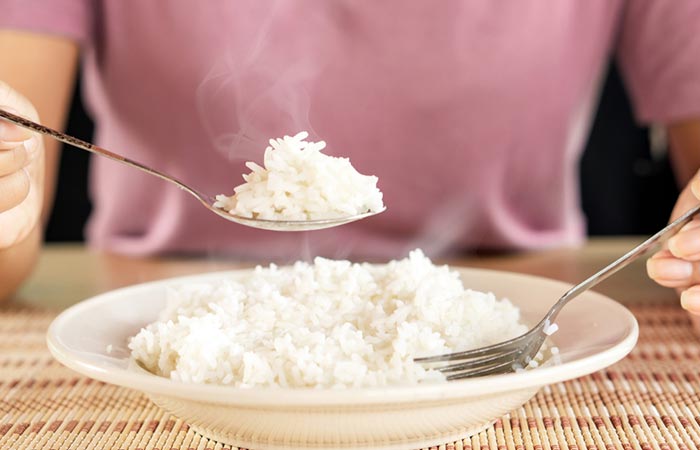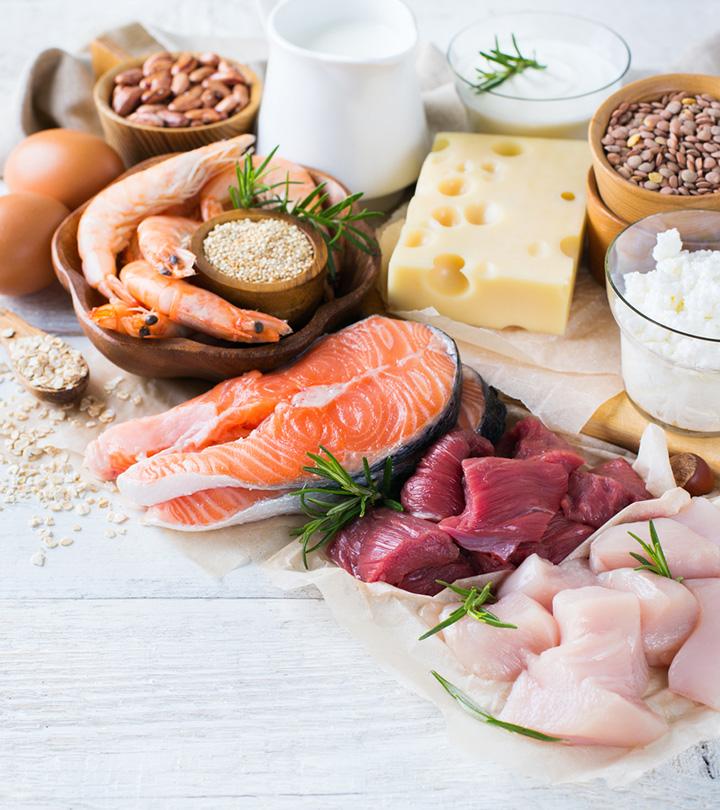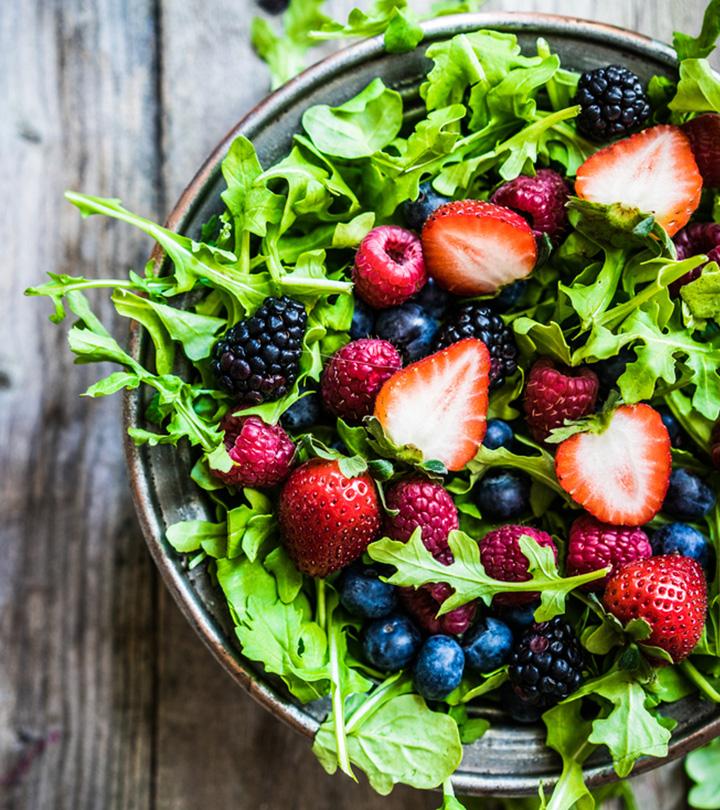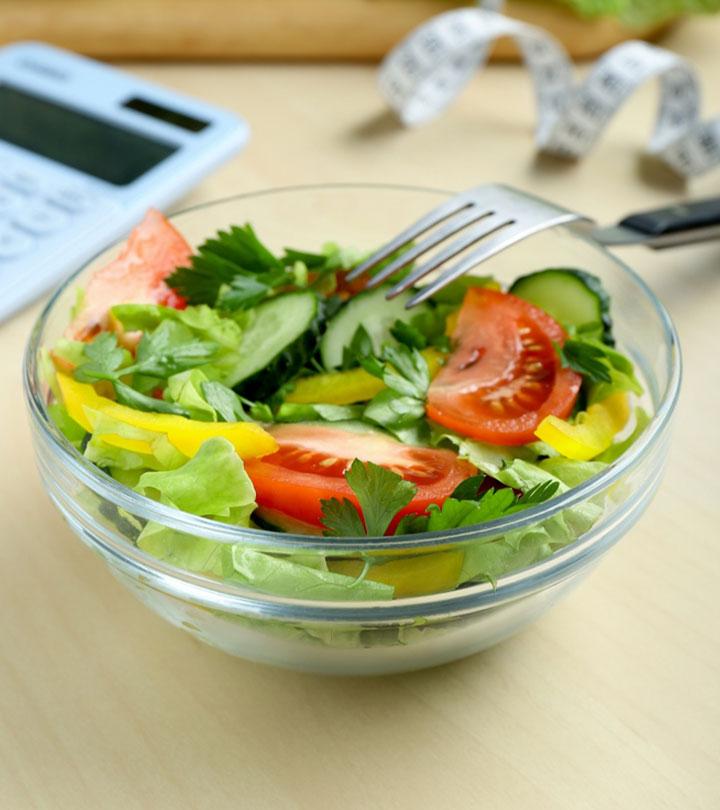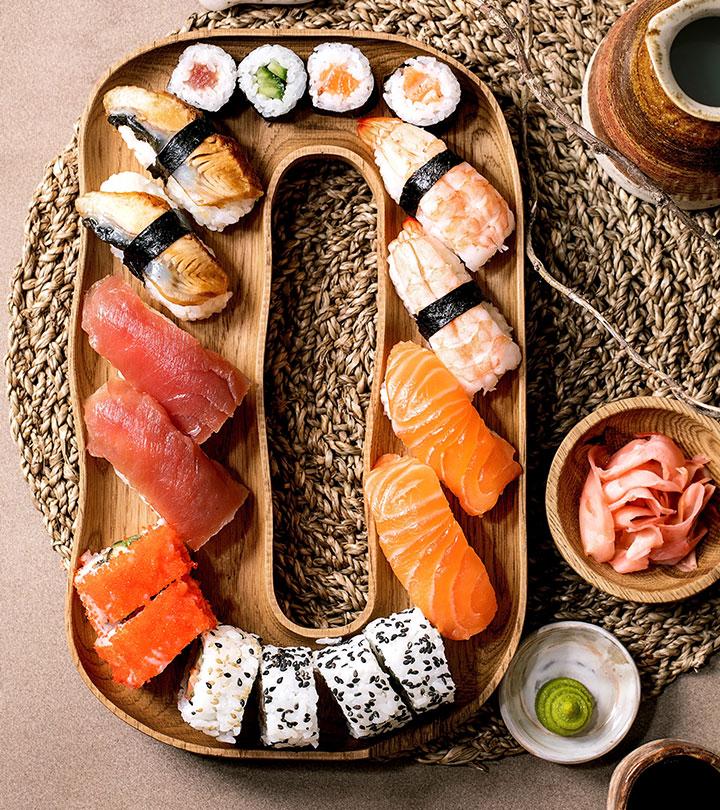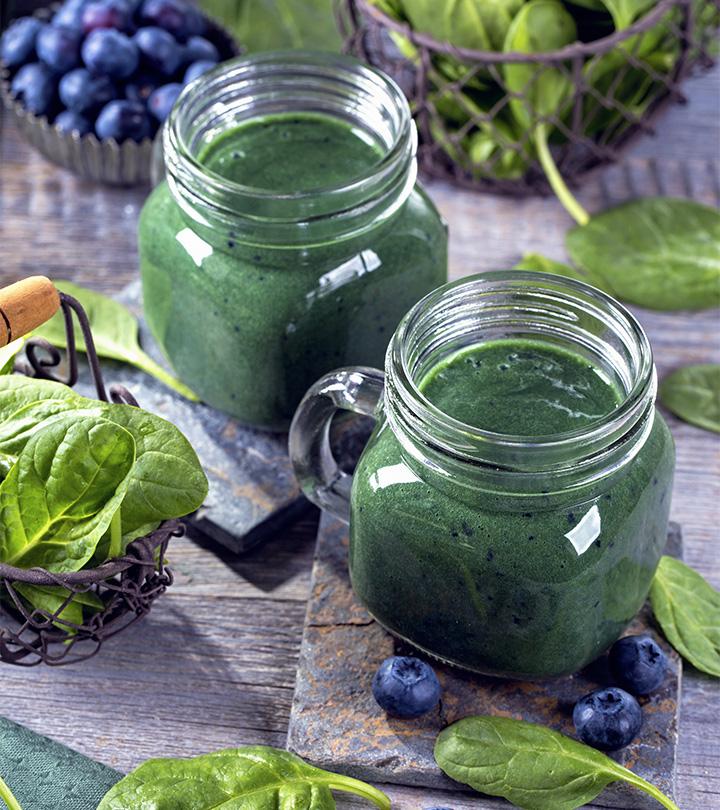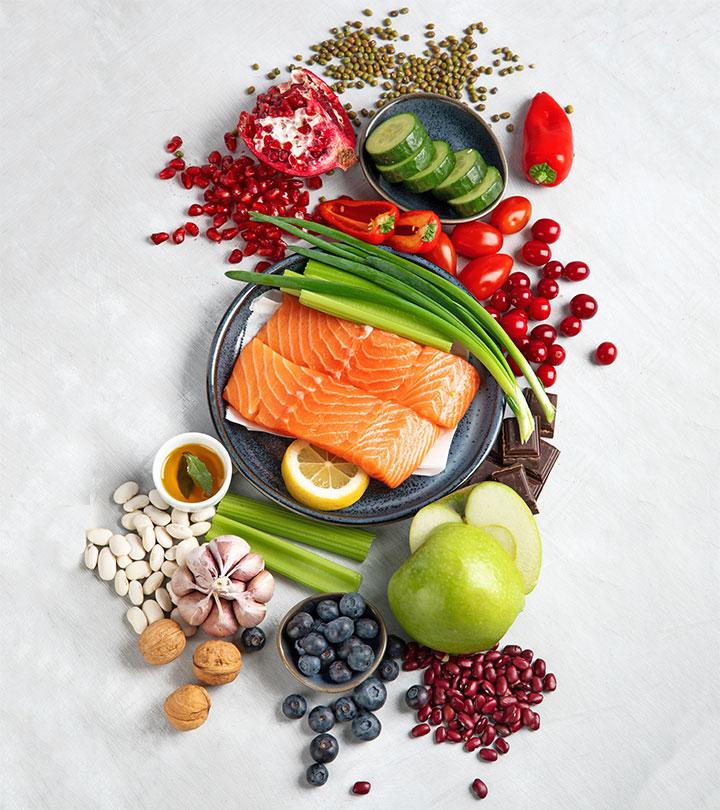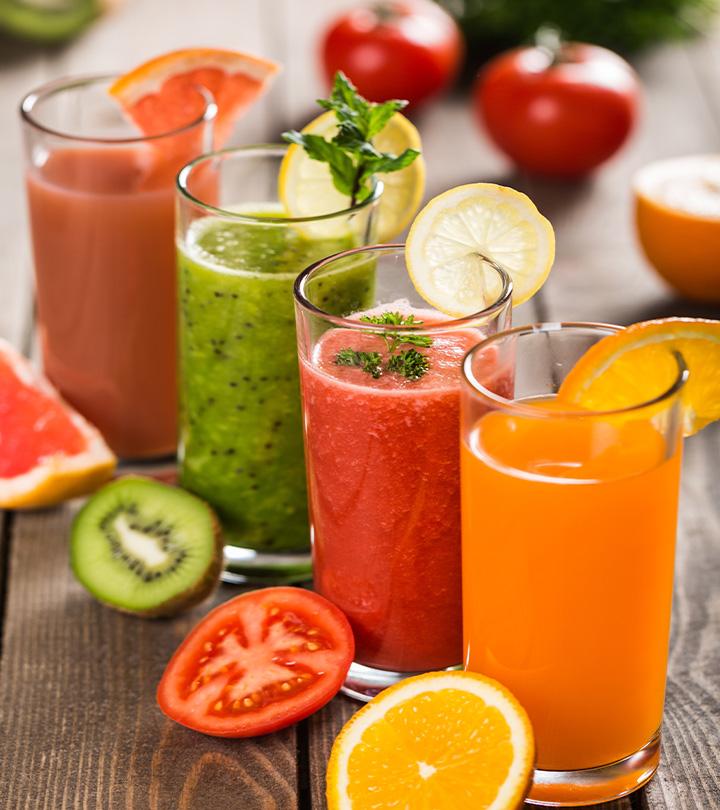The BRAT Diet
Take advantage of these easy-to-digest foods to soothe your gut and get some nutrition.

Image: Shutterstock
BRAT is an acronym for bananas, rice, applesauce, and toast (1). The BRAT diet, also known as the bland diet, is suggested for people with acute diarrheai XThe passing of watery stools more than 3 times a day, which can be caused by infections or a side-effect of certain medications. stomach flu, or gastroenteritis.
This diet has been around for a while now. But if you are new to this diet and want to learn everything about it, you have landed in the right place. Read on to get all the information about the BRAT diet. Scroll down!
 At A Glance: BRAT Diet
At A Glance: BRAT Diet- Principle: A diet rich in electrolytes and simple carbs and low in fiber, protein, and fat that is easy on the stomach.
- Purpose: To maintain hydration levels during illness, firm up loose stools, and ease symptoms like nausea and vomiting.
- Who It Is For: People with upset stomach, acute diarrhea, stomach flu, or gastroenteritis.
- Duration: Short-term
- Who Should Avoid: People with weak immune systems, underweight individuals, and children.
- Cons: May lead to nutrient deficiencies and low energy levels.
In This Article
More On The BRAT Diet
The BRAT diet consists of foods that are easy to digest and low in fat and fiber. Raw and uncooked foods are not recommended. This diet has a mild flavor and is less acidic, enabling fewer bowel movementsi XThe removal of harmful waste in our body in the form of feces (the last step in the digestion process). .
The diet is low in nutritional value. Hence, following it for two to three days and then getting back to a regular balanced diet is recommended.
In addition to the foods in the diet, you can also consume low-fat dairy products, pudding, fruit juice, vegetable stew, eggs, and lean meat. More food options can be added on the second and third days of the BRAT diet.
Does The BRAT Diet Work? What Eleana Kaidanian, RD, Says
Eleana Kaidanian, RD, CDN, CPT-WFS, says, “The BRAT diet is a short-term (typically 24 hours) diet that consists of easy-to-digest or tolerable foods during a time of high output in the form of vomiting and diarrhea or major gastrointestinal distress. While the BRAT diet is not a nutritious diet, I recommend it as a short-term guide or ‘recovery diet’ until more nutrient-dense or complex foods can be reintroduced into the diet and tolerated.”
One major concern with the BRAT diet is whether it is safe for children or not. Let’s find out in the following section.
Is The BRAT Diet Safe For Children?

Though the BRAT diet was once recommended to children with acute diarrhea, experts now suggest against its use for longer periods as it lacks in fat and several other micronutrientsi XVitamins and minerals, required by our body in small quantities, which assist in blood clotting, bone health, etc. (2).
Proper feeding in children with the food appropriate for their age must continue. This must be a standard of nutritional care during acute diarrhea in children.
Let’s now understand how this diet works.
How Does The BRAT Diet Work?
The BRAT diet consists of foods high in starchy carbohydrates and low in dietary fiber. These foods make the stool firm. They are also low in fat and protein and hence do not upset the stomach. Since they are not spicy, they also do not cause nausea.
A report by the CDC provided details on the incidence of stomach flu (acute gastroenteritis). Out of 395 participants, 23% reported diarrhea and vomiting, 50% reported diarrhea, and 27% reported vomiting. 289 individuals had experienced acute diarrhea, which resulted in a 30-day diarrheal prevalence of 7.6%.
In this way, the BRAT diet can help treat diarrhea in both toddlers and adults and improve digestive health.
BRAT Diet For Toddlers
Children with diarrhea and/or vomiting must be introduced to ORS initially. If the child is being breastfed, continue doing so (3). You can also introduce milk formula if the child can tolerate it.
After giving liquid foods, wait and watch for any symptoms. You can then introduce the BRAT diet. The foods are soft, mildly seasoned, low in fiber, and easily digested. This reduces the irritation of the digestive tracti XA group of organs that includes the mouth, throat, food pipe, stomach, small intestine, large intestine, rectum, and anus. .
The BRAT diet can be given to children only for a short while as it cannot replace other healthier food options. Regular food must be resumed after two to three days. The following food pattern can help:
• Coconut water/milk formula (if the child can tolerate)
• Dry toast/mashed potato or sweet potato
• Mashed banana/cooked vegetables
• Rice with boiled lentils
• Broth/clear soup
BRAT Diet For Adults
If you have vomited, rest for a while, and do not consume anything for some time (4). Once you feel that you can tolerate some liquid, sip on regular water, coconut water, apple juice, and broth. Start with lower quantities and gradually increase your intake.
A few hours after you are able to tolerate liquids, you can eat some bland foods like bananas, rice, applesauce, and dry toast.
After 24 to 48 hours, you can resume your regular diet (with foods that are easy to digest). Avoid spicy and fried foods to keep your stomach from getting irritated again.
The following food pattern can help:
First few hours – After you feel your stomach has settled, drink plain water or an electrolyte beveragei XA beverage with minerals like potassium, sodium, and sugar that help rehydrate your body. .
- First 24 hours – Consume clear liquids like coconut water, fruit juice, and broth. If the symptoms of vomiting/diarrhea do not return, you can continue drinking something every two hours (5).
- 2nd day – You can consume foods from the BRAT diet – including bananas, rice, applesauce, and dry toast.
- 3rd day – You can get back to a regular diet. Add fruits and vegetables to your meal for nutrition.
Sarah, a blogger, was advised to follow the BRAT diet by her doctor when she went for a checkup due to severe abdominal pain. She records the following experience in one of her blog posts: “So I went home [from the doctor’s] and did just that; made myself a piece of whole grain toast for dinner with a banana. I spent the entire night doubled over in pain and convinced that my doctor is a complete quack (i).” However, Sarah soon realized that she had to use white bread instead of whole-grain bread and replaced it in her diet the next morning. Later, she adds, “I am finally starting to feel a little bit better, and I’m desperately hoping I can get a good night’s sleep tonight.”
 Quick Tip
Quick TipWe have discussed the foods you should avoid while following this low-fiber diet.
Foods To Avoid On The BRAT Diet

Below are the foods to avoid in the BRAT diet (1):
- Spicy and highly-flavored food, including onions, garlic, hot sauces, and seasonings.
- Fried and fatty foods, including meat (as they cannot be digested in this condition).
- Dairy products like milk, cheese, etc. (you can give milk formula to children if they can tolerate it).
- Sugary foods like cookies, cakes, doughnuts, candy, cold drinks, and ice creams.
 Quick Tip
Quick TipThe BRAT diet is recommended for persons who experience diarrhea or vomiting. Also known as bland diet, the BRAT diet consists of simple-to-digest foods low in fat and fiber. It has a neutral flavor and is lower in acidity; thus, it allows you to have fewer bowel motions. However, because it is poor in dietary fiber and does not provide sufficient nutrition, the BRAT diet is only safe to follow for two to three days until your digestion improves.
Frequently Asked Questions
Is the BRAT diet no longer recommended?
No, doctors do not recommend the BRAT diet anymore because it is limited in nutritional intake.
Is peanut butter OK for the BRAT diet?
Yes, you can eat peanut butter in small quantities when you are on the BRAT diet as it is easy to digest.
Are Cheerios okay for the BRAT diet?
Yes, you can consume dry cereals like Cheerios as they are low in fiber and may help stop diarrhea.
What can I use instead of the BRAT diet?
You can consume a diet rich in fruits, vegetables and whole grains instead of the BRAT diet to speed up recovery.
Can I eat pasta on the BRAT diet?
No, avoid pasta or any product made from refined flour as it can aggravate your diarrhea. You can eat pasta or products made from wheat flour instead.
Key Takeaways
- The BRAT diet is rich in starchy carbs and low in fiber, fat, and protein, so it does not upset the stomach.
- Children and adults with diarrhea can be given this diet for 2-3 days, followed by regular meals.
- Start off with liquids like juices and broths, then move on to soft foods like bananas, rice, and applesauce.
- Avoid foods that cause an upset stomach such as spicy foods, fatty foods, sugary foods, and dairy products.

Image: Stable Diffusion/StyleCraze Design Team
Get a better understanding of the BRAT diet. Watch this video to gain insights into how this diet works and about the incredible impact of the diet on digestive health.
Personal Experience: Source
StyleCraze's articles are interwoven with authentic personal narratives that provide depth and resonance to our content. Below are the sources of the personal accounts referenced in this article.
i. BRAT diethttps://sarahandstewart.blogspot.com/2012/12/brat-diet.html
References
Articles on StyleCraze are backed by verified information from peer-reviewed and academic research papers, reputed organizations, research institutions, and medical associations to ensure accuracy and relevance. Read our editorial policy to learn more.
- “Bland diet” National Center for Biotechnology Information.
- “The BRAT Diet for Acute Diarrhea in Children: Should it be used?”, Practical Gastroenterology, Nutrition Issues in Gastroenterology.
- “2017 Infectious Diseases Society of America Clinical Practice Guidelines for the Diagnosis and Management of Infectious Diarrhea”, Clinical Infectious Diseases, Oxford Academic.
- “Diarrhea and vomiting” Student life, University Health Service, University of Michigan.
- “The BRAT diet” The Oregon Clinic.
- “Impact of restrictive diets on the risk of undernutrition in a free-living elderly population” Clinical Nutrition, US National Library of Medicine, National Institutes of Health.






